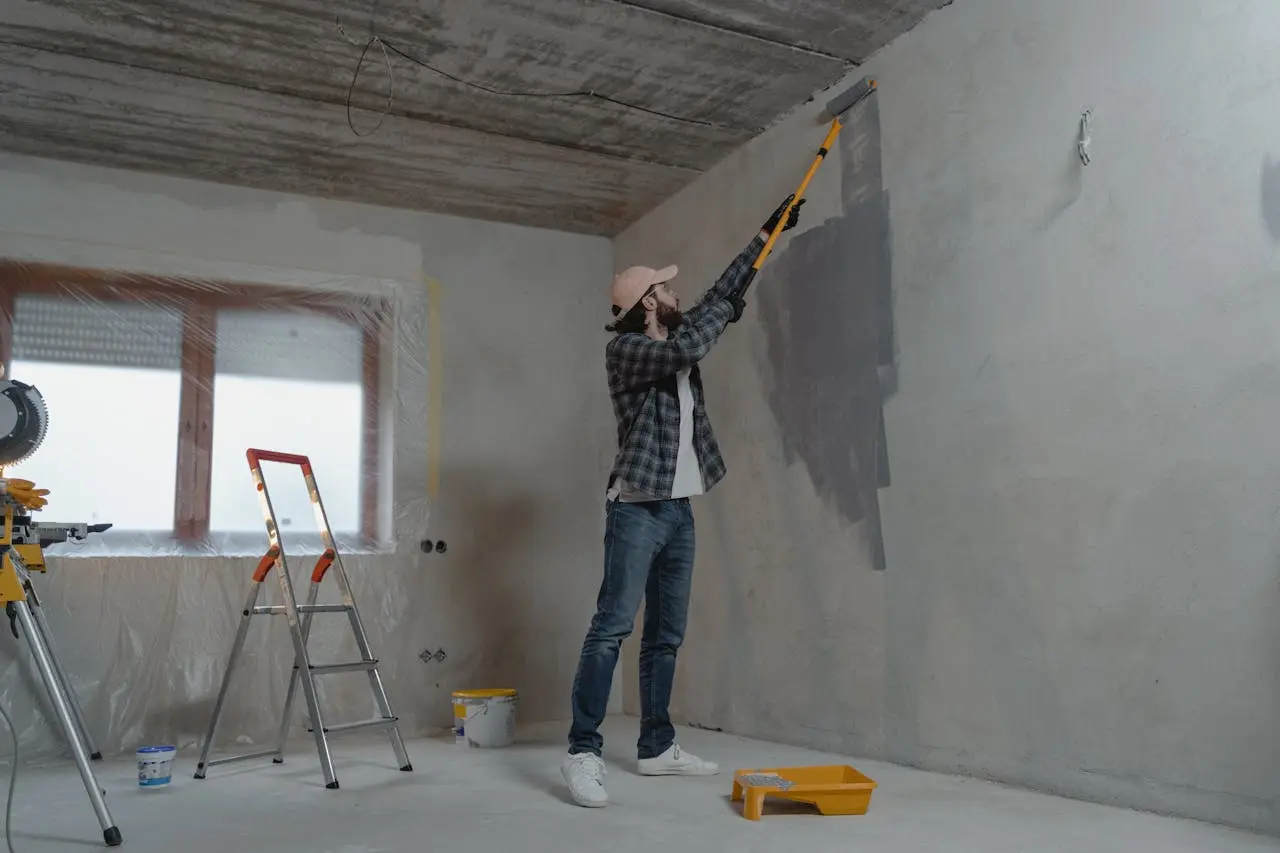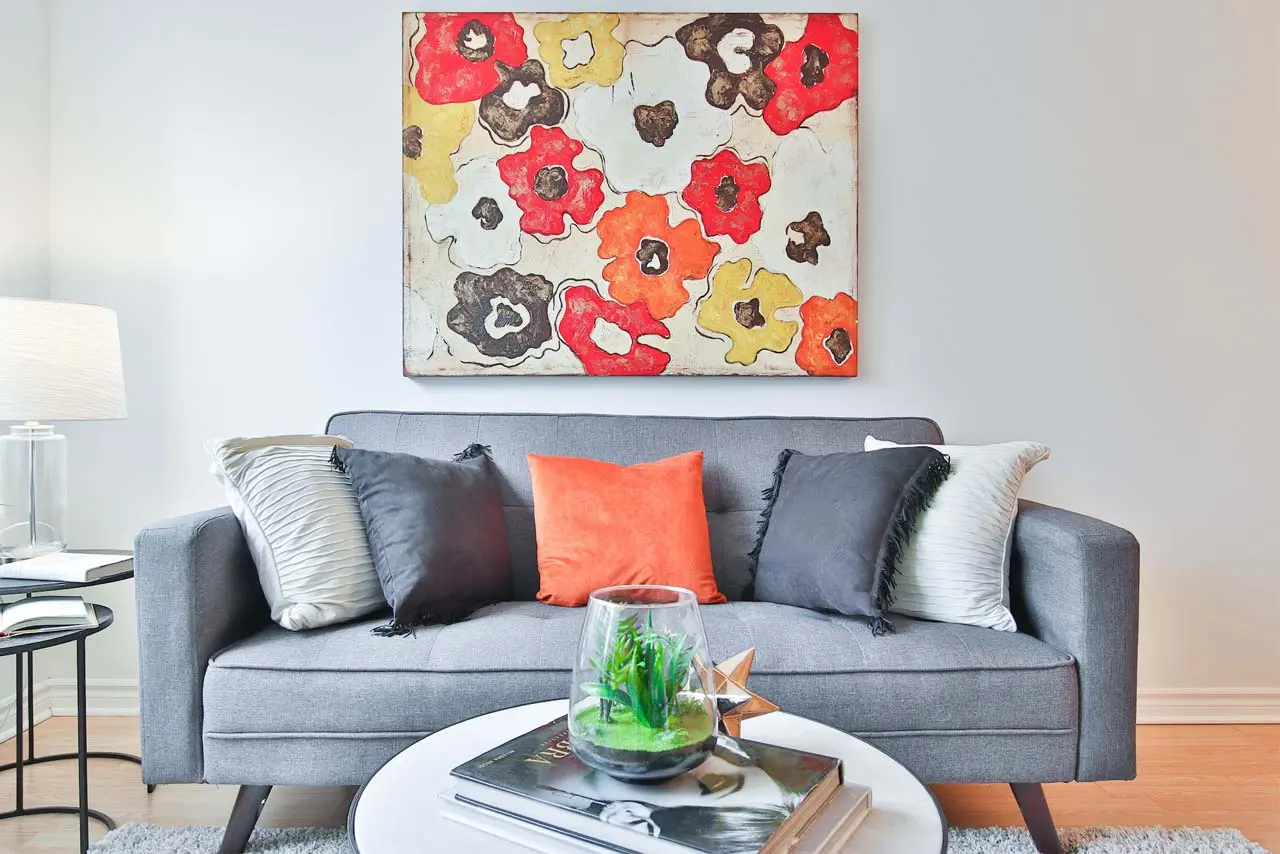Gray Shades (Color Psychology in Interior)
This article will explore the color gray and its psychological effect on interior design. Before discussing how gray affects our mood, we'll learn about this color and how to create it by mixing black and white colors. Then, we'll display different pictures of how gray is used across various areas, from home living rooms to office settings. Please stick with us for an in-depth look at gray and to discover whether it suits your taste.

Understanding Gray Color:
Gray or grey is often known as a color, but it's a shade that can be made by mixing equal amounts of black and white.
In interior design, gray is a classic, versatile shade that matches many colors well. It usually makes us think of cloudy days and isn't the happiest color; despite this, it is frequently used in modern interior decor to establish an ambiance of elegance and modernity.

Our Curtain Project at Laddarom New Ratchaphruek, Bangkok.
Neutral Gray HEX Code #808080
Mixing black and white gives you a "neutral gray." This gray is the purest type you can create because it has no other tint or hue. Start with white paint and add a small amount of black, mixing gradually until you reach the desired shade of gray. The more black you add, the darker the gray will become. If you're mixing colors, combining equal parts of the primary colors (red, blue, and yellow) can also result in gray, particularly if you adjust the balance with white or black to lighten or darken the tone.

Gray in Interior Design:
The gray shade is frequently used as a neutral base in interior design, serving as a background that allows other colors to stand out and draw attention without overwhelming the viewer. Whether in a professional setting or a cozy home environment, gray shade is a versatile color capable of producing various effects and evoking different emotions. It is associated with seriousness and security, yet it also possesses the power to create a warm and comfortable atmosphere. The key to using gray effectively in interior design is to thoughtfully select the exact gray tone and the selection of accompanying accent colors and other decorative elements to create the right feel.

What Color Goes With Gray?
Combine gray with soft pastels like pink and yellow to subdue their brightness and achieve a modern style in your room. (Adapted from "Natural Style" by Janet Sobeksy)
Symbolism and Meaning of Gray Shade
Gray Shade holds symbolic significance and conveys meaning related to safety, reliability, modesty, intelligence, dignity, maturity, strength, convenience, age, and boredom. It serves as a diplomatic color, bridging the gap between black and white. Gray is often associated with characteristics such as being conservative, classy, and calm, but it also has a mysterious quality.

Psychology of Gray Shade in Interior Design:
The use of gray shades in interior design can have various psychological effects on the occupants of a space. Here are some common psychological associations and impacts of gray in interior design:
Pros of Gray in Interior:
- Neutrality: Gray is seen as neutral, offering stability and versatility across various design styles.
- Calmness: Light grays can bring a calm and soothing feel, ideal for relaxing spaces like bedrooms.
- Sophistication: Associated with elegance and luxury, gray adds a refined touch when used well.
- Balance: It helps harmonize different colors as a backdrop that enhances other design elements.
- Serenity: Gray can promote peace, particularly with cool undertones, suitable for bathrooms or quiet corners.
- Modernity: Often linked to modern styles, gray gives a clean, minimalist look.
Cons of Gray in Interior:
- Potential Downsides: Overuse can lead to dullness, and darker shades might seem cold, requiring balance with warmer or textured elements to maintain warmth and interest.
When considering the psychological impact of gray shades in interior design, it's crucial to remember that individual experiences and preferences may vary. The overall effect will also depend on the specific shade of gray, lighting conditions, and the context in which it is used.

How to Integrate Gray into Your Home's Design?
Paint Your House in Gray:
Choose a shade of gray that complements the size and lighting of your room. Lighter grays can make small spaces appear more prominent, while darker hues add a sophisticated touch to larger rooms. At Cher Decor, we offer painting services for our clients, so don't hesitate to contact us.

Install Wallpaper in Gray Color:
Wallpaper is an excellent way to add texture, depth, and character to any room. Our store offers a vast collection of wallpaper patterns, from subtle gray geometrics to bold metallic finishes; we can help you choose a style that complements your space and enhances its overall aesthetic. Consider pairing it with vibrant colors like purple for an extra pop.

Add Gray Curtains or Accents to your Home:
Use gray in minor decor elements like throw pillows, rugs, or curtains. These can tie the room together without overwhelming it with color.

Add Gray Flooring:
Incorporating gray floors into your home provides a subtle yet impactful background color that enhances interior design. This versatile choice can seamlessly integrate into various styles, giving your space a modern, stylish foundation.

Update Your Furniture:
Consider gray upholstered furniture, such as sofas or armchairs, which can serve as neutral, versatile foundations for your living space. To bring some energy to the room, complement them with vibrant accents like red or orange throw pillows or a colorful piece of art that pairs well with gray.

Utilizing Gray Hues in Office Environments:
Gray shades in office settings create a professional and neutral backdrop. It's often used because it's seen as sleek, sophisticated, and discreet, which helps maintain a focus on work. Lighter grays can make a space feel more open and bright, which may contribute to a sense of well-being and productivity. Darker grays can bring a sense of formality and strength, suitable for areas like executive offices or boardrooms.

Gray is often paired with accents of more vibrant colors or warm textures to avoid a dull or cold atmosphere. This enhances the aesthetic and creates a more dynamic space. Additionally, gray can match most other colors, making it a flexible option for future design changes.

Summary:
We hope you found this article on shades of gray insightful and helpful. Feel free to leave your thoughts and responses in the comment section below. Should you be interested in a gray makeover for your space through our window treatment services, wallpaper installations, flooring solutions, or painting services, don't hesitate to contact us at Cher Decor. We provide free consultations and quotes, promising the best value for your investment.
Cher Decor: Crafting Elegance
FAQs About Gray Color and Its Meaning:
1- What Does Gray Color Mean in Wood Safety?
This question isn’t directly related to our article, but since many of you have asked, we’d like to share our insights.
The "gray color" in wood can indicate several factors related to wood safety and quality, primarily due to exposure, aging, or decay:
- Exposure to Sunlight and Weathering: Over time, wood exposed to sunlight and rain can develop a grayish tone as the outer surface breaks down. This weathered appearance doesn't necessarily affect the structural integrity, but it can indicate the wood has been exposed to harsh elements. Treated wood can maintain its strength despite graying.
- Mold or Mildew: A gray color may sometimes be due to mold or mildew, especially in damp environments. While mild surface mold doesn't usually affect structural safety, it can lead to health risks and may require treatment.
- Decay or Rot: In untreated wood, a gray color, especially when paired with softness or a spongy texture, can be a sign of decay. This would impact safety, as decaying wood loses its strength over time.
In summary, while a gray color in wood can be cosmetic, in specific contexts, especially with additional signs of decay or mold, it may indicate the need for treatment or replacement to ensure safety.



















